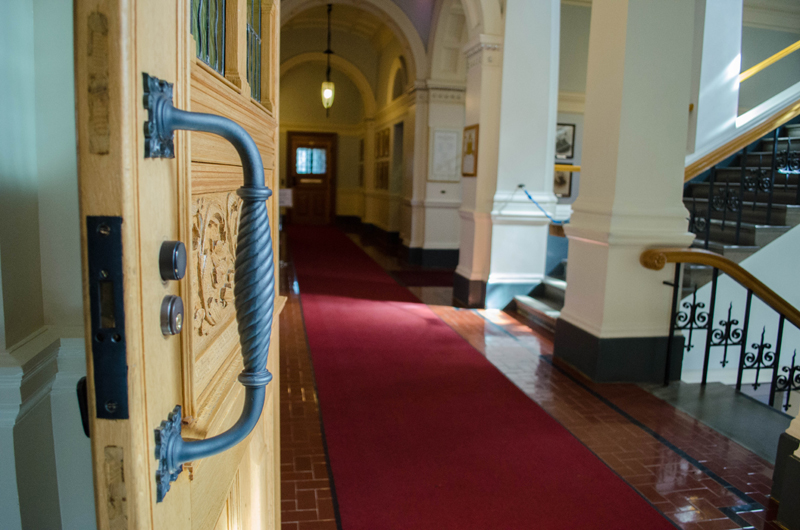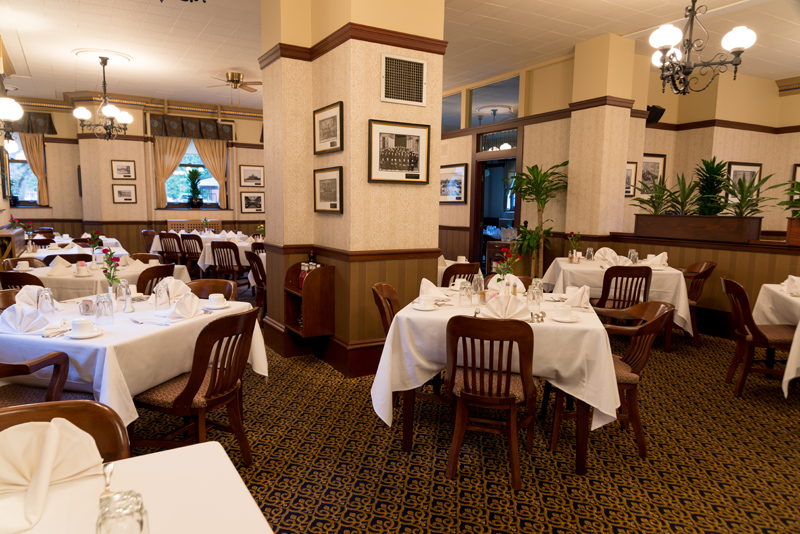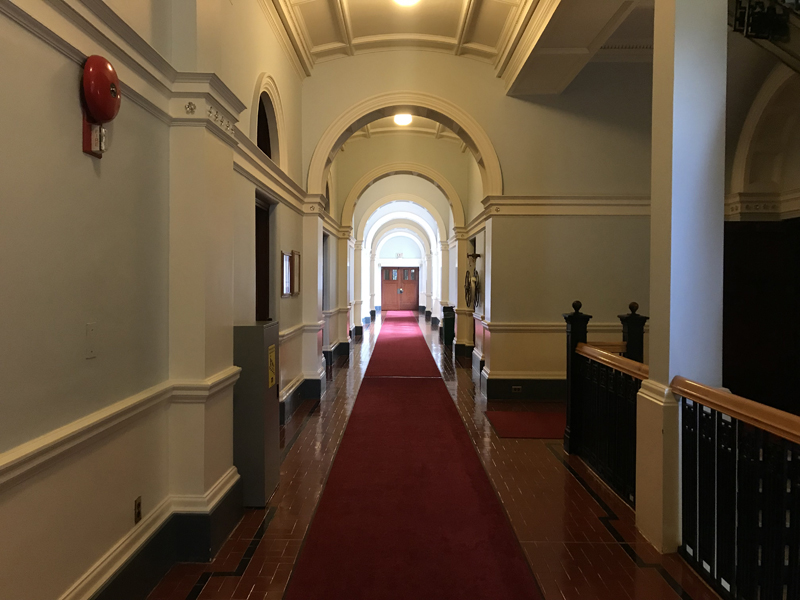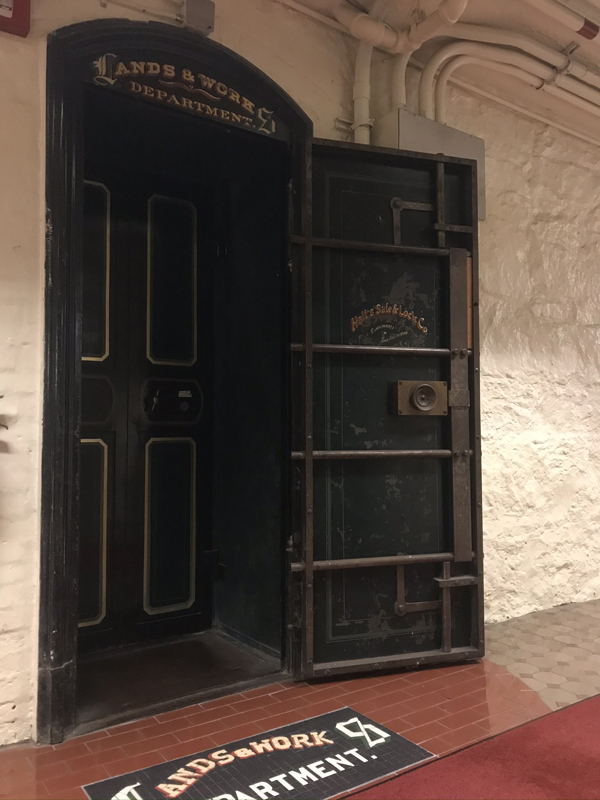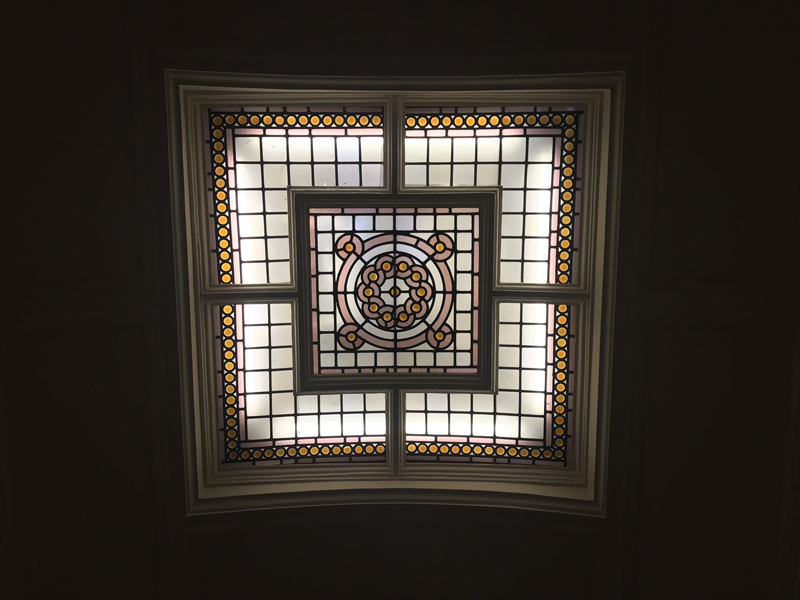Throughout the Parliament Buildings, architect Francis M. Rattenbury and his associates incorporated many fine architectural details. The paint scheme, stained glass, floor tiles, plaster details, and wood mouldings all enrich the interior. The richness of the colour scheme - including gold and silver leaf - was revealed once years of institutional white and beige paint were removed. Rattenbury was assisted in the interior finish by Victor Moretti, who also executed the drawings for the additions that were completed in 1915.
Many of the interior windows throughout the Parliament Buildings - used as screens, dividers, and skylights - are made of leaded or stained glass. The majority of the leaded glass was created by two Canadian firms, Henry Bloomfield and Sons of New Westminster and Joseph McCausland of Toronto. The painted and stained glass was largely the work of two British companies, Powell Bros. of Leeds and E.W. Morris and Sons of London.
There are several fire-proof vaults in the basement of the Parliament Buildings. They were originally designed to store such valuables as cash, gold, and stock certificates. They now serve as document storage areas.
